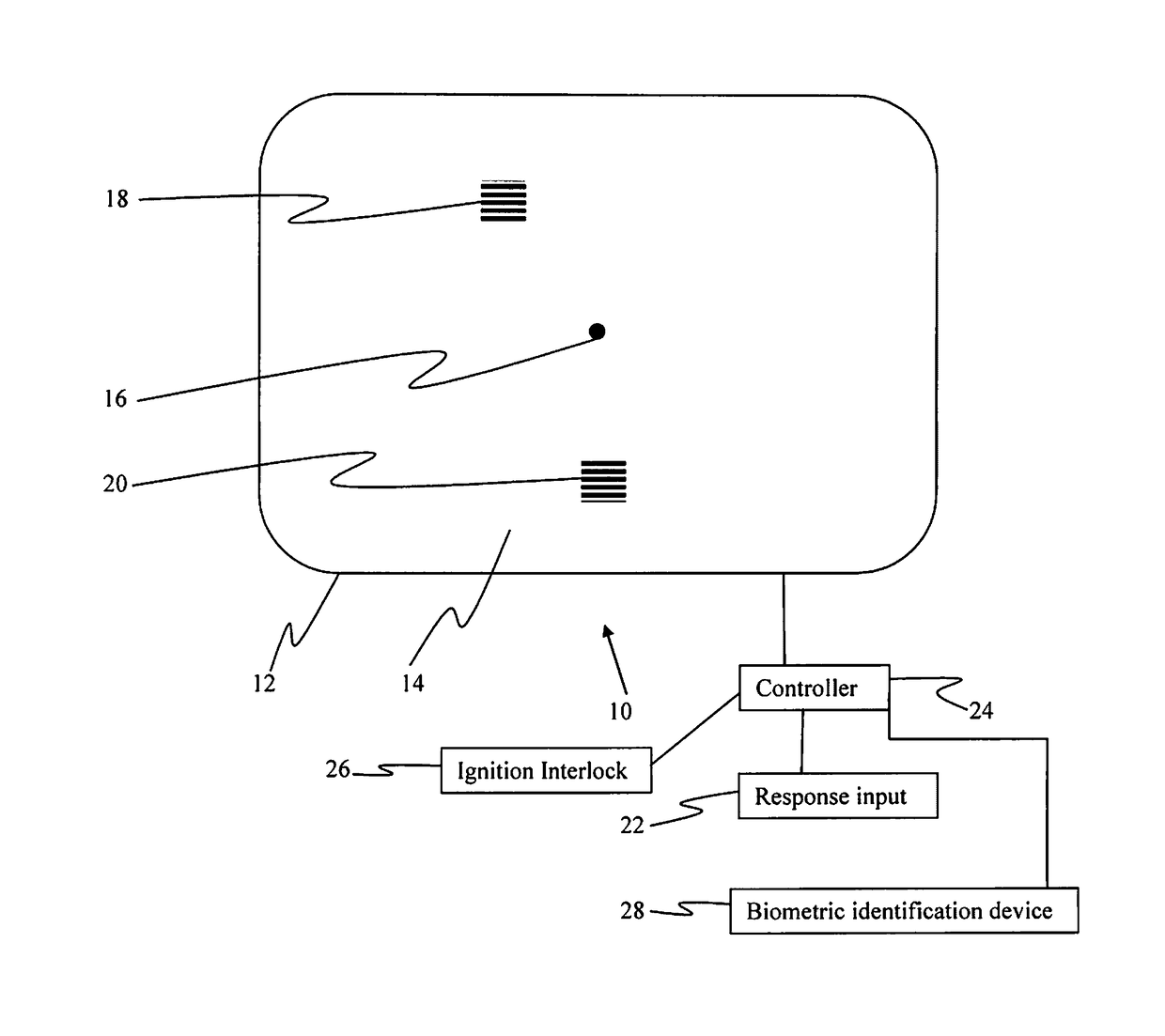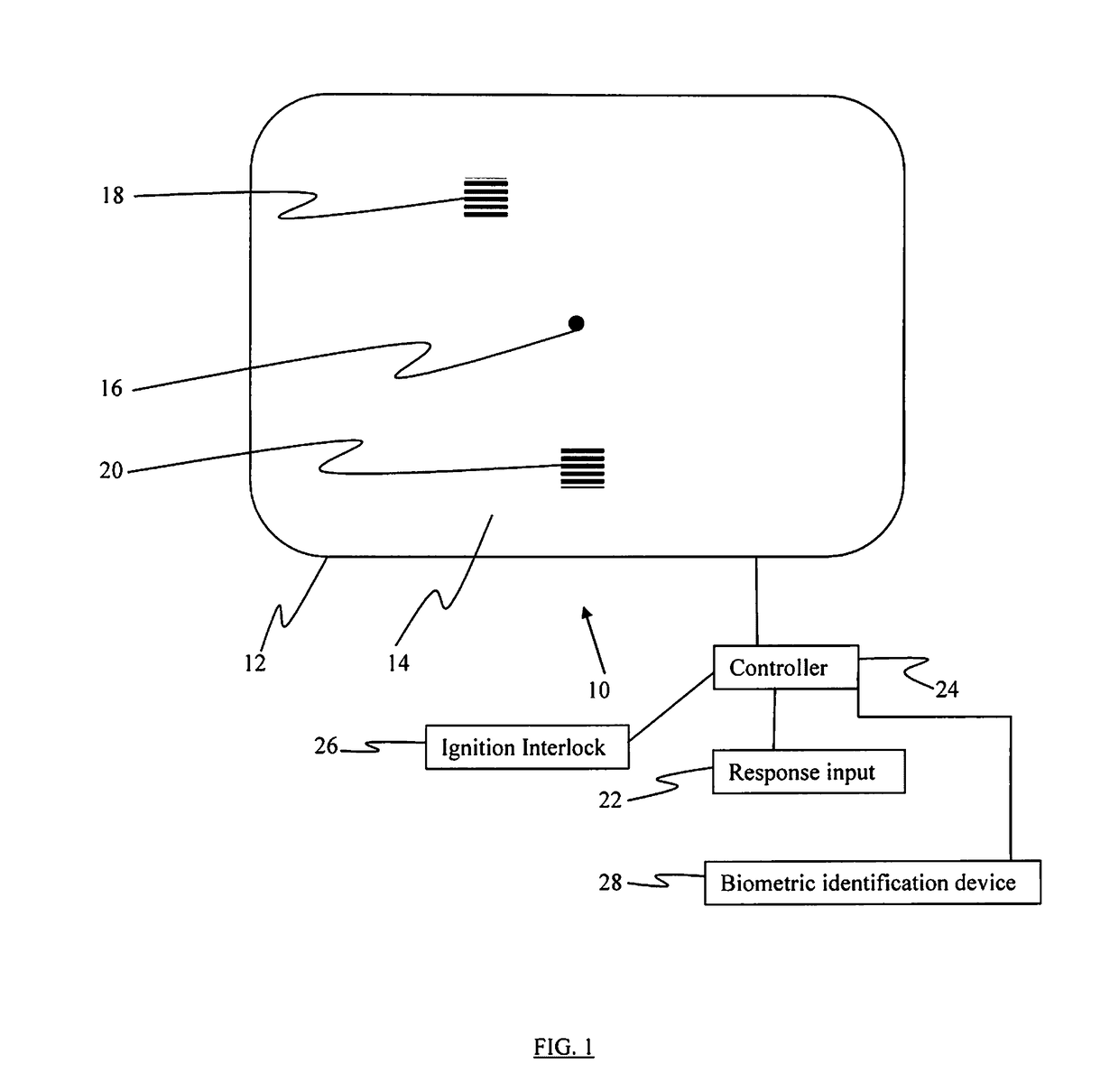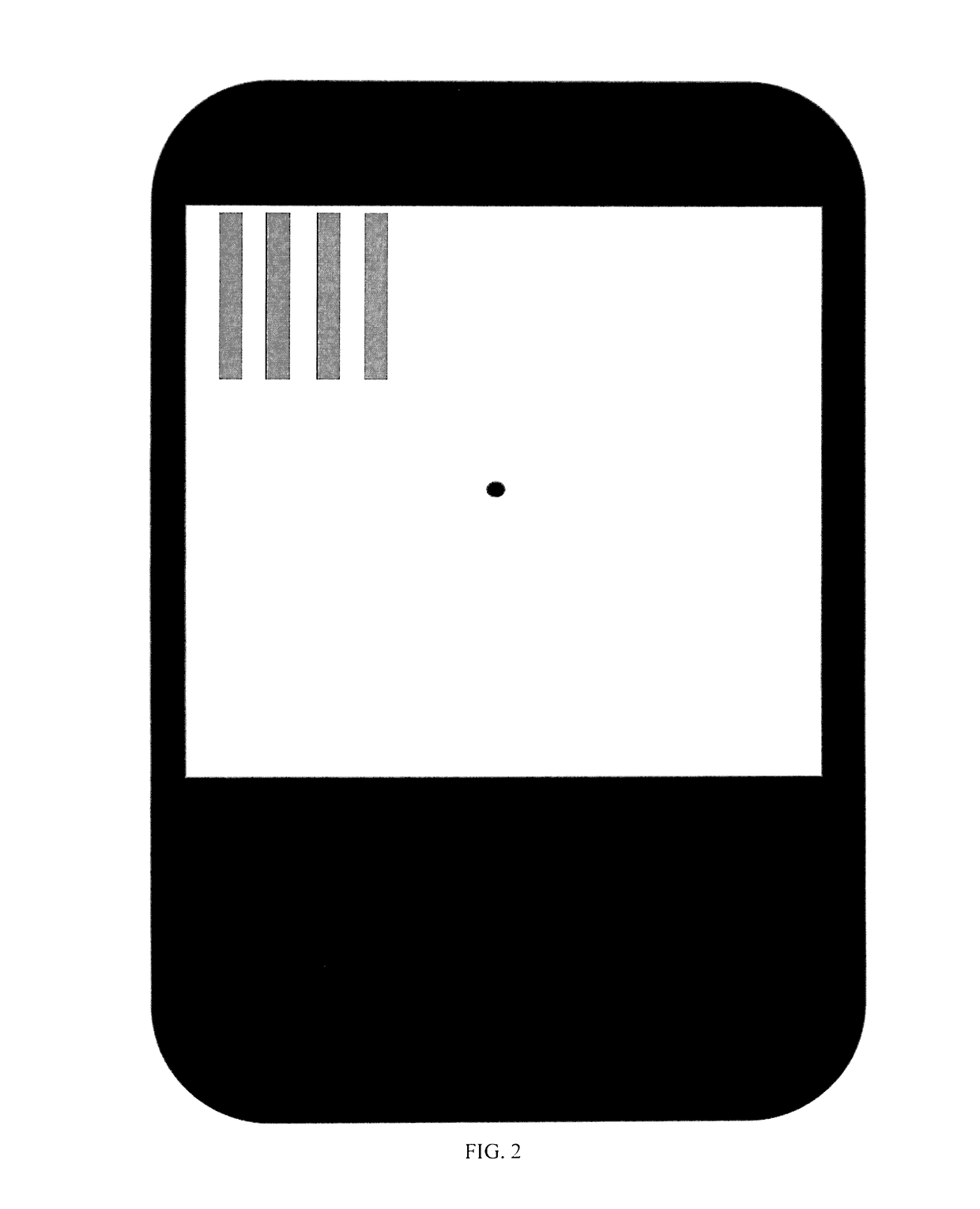Method and device for detection and assessment of marijuana impairment
a technology of impairment and marijuana, applied in the field of functional impairment testing, can solve the problems of poor detection accuracy, lack of such devices for cannabis, and poor detection accuracy of marijuana and psychoactive drugs
- Summary
- Abstract
- Description
- Claims
- Application Information
AI Technical Summary
Benefits of technology
Problems solved by technology
Method used
Image
Examples
Embodiment Construction
[0067]Referring to FIGS. 1, 2 and 3, test screen 10 according to an example embodiment of the invention is depicted. Test screen 10 includes perimeter 12, background field 14, fixation target 16, first sine wave grid 18 and second sine wave grid 20.
[0068]Background field 14 extends over the area within perimeter 12. Fixation target 16 is located approximately in the center of background field 14. Fixation target 16 may be any contrasting color to background field 14 and may be steady or flashing in nature
[0069]First sine wave grid 18 and second sine wave grid 20 are representative of test targets presented during testing according to an example embodiment of the invention. First sine wave grid 18 and second sine wave grid 20 are presented at random locations within background field 14 peripheral to fixation target 16. The positions at which first sine wave grid 18 and second sine wave grid 20 are depicted represent two such random locations but many other random location are possibl...
PUM
 Login to View More
Login to View More Abstract
Description
Claims
Application Information
 Login to View More
Login to View More - R&D
- Intellectual Property
- Life Sciences
- Materials
- Tech Scout
- Unparalleled Data Quality
- Higher Quality Content
- 60% Fewer Hallucinations
Browse by: Latest US Patents, China's latest patents, Technical Efficacy Thesaurus, Application Domain, Technology Topic, Popular Technical Reports.
© 2025 PatSnap. All rights reserved.Legal|Privacy policy|Modern Slavery Act Transparency Statement|Sitemap|About US| Contact US: help@patsnap.com



